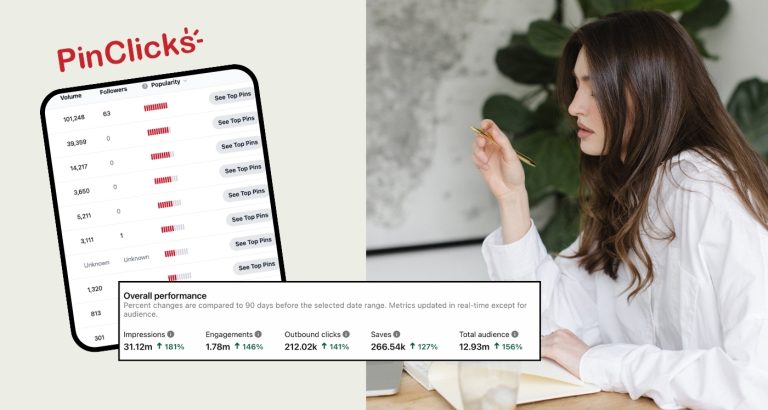15 Tips To Get Better Responses From ChatGPT

I have some tips to help you get better responses from ChatGPT, and other AI chat models. It’s amazing how far technology has come, right? Just a few years ago, having an intelligent conversation with a machine sounded like science fiction.
But today, incredible tools like ChatGPT are right at our fingertips, helping us brainstorm, problem-solve, and even write content! But here’s the thing—just like in real life, the quality of the conversation you have with ChatGPT depends on the questions you ask.
As an affiliate partner of various brands and sponsored content, HerPaperRoute may earn commission on qualifying purchases. Disclaimer
No matter if you’re looking for marketing advice, creative ideas, or personal guidance, how you phrase your prompts can make all the difference between a vague response and one that’s truly insightful.
So, today, I’m excited to share with you some practical tips on how to get better responses from ChatGPT. By the end of this guide, you’ll be able to supercharge your interactions and get the most value out of every question you ask!

How To Get Better Responses From ChatGPT by Asking Better Questions
I’ll share my tried-tested-and-true tips for crafting effective ChatGPT prompts first, and then share what ChatGPT suggests you include in your prompts.
By the way – this is a long post! If you’d prefer to read this as a downloadable ebook ad-free, enter your email below and I’ll send it to you immediately:
1. Give It A Tone
By defining the tone, you allow ChatGPT to produce responses that are not only informative but also contextually and emotionally aligned with your goals, audience, and brand.
- Example: “the tone is professional yet friendly.”
- Example: “deliver it in the style of comedian Ali Wong.”
There are many reasons why it helps to set the tone – literally! By giving ChatGPT a tone, it:
a) Tailors the Response to Your Audience
Different audiences respond to different tones. For example, a professional, formal tone is appropriate for business communications, while a casual, friendly tone might work better for social media or personal blogs. Defining the tone ensures the response matches the style that resonates with your specific audience.
- Example:
- Formal tone: “What strategies should I implement to maximize client retention?”
- Casual tone: “How can I keep clients coming back without being pushy?”
B) Aligns with Your Brand Voice
Whether you’re a health coach, business owner, or content creator, your brand has a particular voice that reflects its values and personality. By specifying the tone, you can ensure that the response aligns with your brand’s messaging and keeps it consistent.
- Example: A health coach might want a motivational tone, whereas a financial advisor might prefer a more authoritative tone.
c) Creates the Desired Emotional Impact
The tone can influence how the reader feels when they interact with your content. Whether you’re aiming to be inspiring, humorous, comforting, or informative, tone can evoke emotions that support the content’s intent.
- Example:
- Inspiring tone: “You’ve got this! A healthy lifestyle is within your reach—here’s how to make it happen.”
- Informative tone: “Here are five scientifically-backed ways to improve your overall health.”
D). Improves Engagement
The right tone makes the content more engaging and relatable, encouraging your audience to read, respond, and take action. If you’re writing for a fun and vibrant social media audience, for example, a more light-hearted and fun tone can keep readers entertained and engaged.
- Example: For a Gen Z audience, you might want a fun and trendy tone: “Ready to crush your wellness goals? Let’s dive into these killer health tips!”
E) Clarifies Expectations for Complex Topics
When discussing complex or technical topics, tone can help break down the information in an approachable way. For example, asking for a simplified or conversational tone makes technical advice more digestible for a general audience.
- Example: “Explain the benefits of a plant-based diet in simple terms a beginner would understand.”
F) Ensures Appropriateness for Different Contexts
Some situations demand sensitivity or a particular level of seriousness. Setting a tone ensures that the response is appropriate for the context—whether it’s a supportive tone for delicate health matters or a humorous tone for a fun social post.
- Example: When discussing mental health or sensitive topics, a compassionate tone might be best: “Take small steps—your mental health journey is unique to you.”
G) Increases Persuasiveness
A tailored tone can also enhance the persuasive power of your message. For example, a confident tone can help establish authority, while a friendly tone can make the message more relatable, which can be crucial in building trust and credibility with your audience.
- Example: “This step-by-step guide will make improving your nutrition feel like a breeze.”

2. Give it a role
Next, it can help to give ChatGPT a specific role. For example, you can say “you are an expert financial advisor.”
3. Give it a situation
Let ChatGPT understand where it’s answers are to be taking place.
Example: “you are speaking on a stage, delivering a presentation about how to use social media to get organic leads.”
4. Give it an audience
It helps to request a focus on a specific audience or niche. Tailoring your prompts to a specific audience or niche helps ensure that the advice you receive is highly relevant to your target market.
If you’re a health coach targeting millennial women interested in fitness, your marketing strategies would differ greatly from those targeting senior citizens with chronic illnesses.
- Example: “How can I target millennials interested in vegan nutrition through Facebook ads?”
- Example: “the audience is real estate agents who want to grow the awareness of their brand and their listings with social media”
- Why: Audience specifics lead to more relevant and targeted strategies.
By specifying your audience in your query, such as asking “How can I create productivity-related content for millennial women on Instagram?”, ChatGPT can provide recommendations that resonate with that group, leading to higher engagement and better results.
Understanding your audience’s preferences and needs is key to crafting content and marketing strategies that connect.
5. Give it parameters
If you have specific limitations—like budget, time, or resources—it’s important to include these parameters in your query. ChatGPT can tailor its responses to offer solutions that fit within your constraints.
For example, if you’re working with a limited budget, asking “How can I market my health coaching business with $200 a month?” will give you more realistic strategies, such as focusing on organic social media growth or cost-effective email marketing tools.
- Example: “How can I market my health coaching services with a budget of $100 per month?”
- Example: “create an outline for this presentation. Write the opening and closing remarks. Keep it under 700 words.”
- Why: Giving parameters makes the response more realistic to your situation.
Without these constraints, ChatGPT might suggest strategies that require a much larger investment, which wouldn’t be as useful in your particular situation. Defining parameters helps ensure you get practical, actionable advice.
6. Give it a framework
It can also help to giveChatGPT an example to work from. For example, you could copy and paste text from an article which gives a good example of the tone you like, or the steps of a process for something, and ask ChatGPT to replicate the the framework.
How Does ChatGPT Want To Be Asked, Though?
You have my suggestions above, for how I like to set up prompts for ChatGPT. But it wouldn’t be fair to publish this article without asking ChatGPT how it would like to be addressed.

So, I asked ChatGPT what it suggests as the best ways to ask it questions, and here’s what it told me.
To get the best response from ChatGPT, it’s important to craft your question or prompt with clarity and specificity. Here are some strategies to optimize your query:
7. Be Specific
The more specific your question or request, the more precise the response you’ll get from ChatGPT. When your query is broad, it can result in a vague or overly general answer, which may not be helpful. Instead, focus on key details.
- Example: Instead of asking “How do I market my business?”, ask “What are the best digital marketing strategies for a marketing coach to attract clients in 2024?”.
- Why: Specific questions yield focused, actionable advice.
Basically, if you’re looking for content ideas for a TikTok coaching blog, asking “What are some TikTok tips?” will yield general results. However, asking “What are some content ideas for a TikTok coaching blog targeting college students in need of a side hustle?” gives ChatGPT clear direction, allowing it to offer highly relevant ideas for that audience.
By narrowing your focus, you’ll get responses that address your specific needs, saving time and improving the quality of the interaction.

8. Provide Context
Providing background or context is crucial for ChatGPT to fully understand what you’re asking.
If you’re launching a new service or product, for example, sharing details about your target audience, goals, and niche helps the AI tailor the advice to fit your situation. Without context, you might get answers that aren’t as relevant or actionable.
When you say something like, “I’m a health coach focusing on plant-based nutrition for busy professionals. What’s the best way to promote my services online?” it helps ChatGPT offer suggestions specifically for that audience and niche, instead of general health coaching advice. Think of context as giving the AI a roadmap to follow for better answers.
- Example: Instead of “How do I write a blog post?”, ask “How can I write a blog post targeting busy moms looking for quick healthy meal ideas?”.
- Why: Context helps ChatGPT tailor its answer to your exact needs.
9. Define Your Goal or Objective
When ChatGPT understands your end goal, it can provide more actionable advice that aligns with your needs. If your objective is to increase email sign-ups, for instance, that information will lead to tips focused on lead magnets, optimizing landing pages, and creating compelling call-to-action buttons.
On the other hand, if your goal is brand awareness, the focus will shift to content strategies and social media outreach.
- Example: “How can I increase email signups for my buisness coaching newsletter?”
- Why: This narrows down the advice to actionable steps toward a specific goal.
Always ask yourself, “What am I trying to achieve?” and make sure that’s clear in your prompt. This makes it easier for ChatGPT to give you solutions that move you closer to your goal rather than offering advice that’s too broad or off-target.
10. Ask for Step-by-Step Guidance
When you’re dealing with complex tasks or processes, asking for step-by-step guidance ensures you get a clear, structured response that’s easy to follow.
ChatGPT can break down intricate tasks into manageable steps, whether you’re creating a content calendar, designing a marketing funnel, or launching a product. This approach is especially useful if you’re new to a concept or need clarity on how to implement something.
- Example: “Can you provide a step-by-step guide on how to create an Instagram content calendar for a buisness coach?”
- Why: It ensures a clear, structured response that’s easy to follow.
By requesting step-by-step guidance, you’ll not only understand the process better, but you’ll also feel more confident about following through on the advice.
11. Ask for Examples
Sometimes theoretical advice can be hard to implement, especially if you’re not familiar with a particular strategy or concept. Asking for examples in your query can make the advice more tangible and easier to understand.
For instance, instead of simply asking, “How do I write a compelling email subject line?” you could ask, “Can you give me examples of compelling email subject lines for a vegan lifestyle newsletter?
- Example: “Can you provide examples of successful email subject lines for a business coaching business?”
- Why: Concrete examples can provide more practical insights.
By providing examples, ChatGPT not only gives you a theoretical understanding but also practical templates you can use or modify for your own needs. It bridges the gap between learning a concept and applying it effectively.
12. Request for Time Sensitivity or Trends
To stay relevant, it’s important to ask ChatGPT for time-sensitive or trend-focused advice, especially in industries that evolve quickly, like digital marketing or technology. By framing your prompt around current trends, you can get up-to-date insights that reflect the latest industry shifts.
For example, asking “What are the latest 2024 wellness marketing trends for health coaches?” will ensure you’re receiving current and actionable advice that takes into account the latest consumer behaviors and marketing platforms.
- Example: “What are the latest 2024 trends in fashion marketing?”
- Why: Asking for the latest trends ensures you’re getting up-to-date advice.
This keeps your strategies cutting-edge and allows you to stay ahead of your competition by leveraging the most effective and timely tactics.
13. Ask Follow-Up Questions
Sometimes the first response you get from ChatGPT will spark additional thoughts or questions. Don’t hesitate to ask follow-up questions to dig deeper into a specific point or clarify advice.
For example, if ChatGPT suggests using Instagram Reels to grow your business, you might follow up with “What types of content should I post on Instagram Reels to attract web design clients?” This gives you more specific information that you can implement.
- Example: “You mentioned content marketing, what are some topics I should focus on for my beauty blog?”
- Why: Deepens the conversation and ensures more comprehensive insights.
By engaging in a back-and-forth dialogue, you can refine the advice and get detailed insights tailored to your exact needs. It turns a one-time question into a dynamic conversation, providing richer value.
14. Test and Iterate
If the initial response you get from ChatGPT isn’t exactly what you were looking for, don’t give up. It’s perfectly fine to tweak your question and try again. Sometimes adjusting the phrasing, adding more context, or specifying different parameters can lead to a more useful response.
For example, if you initially asked “How do I grow my solar panel business?” and the response was too general, you could rephrase it to “What are the best ways to use content marketing to grow my solar panel business within the next 6 months?”
This iterative approach ensures that you get increasingly refined and tailored responses.
- Example: If the first response isn’t exactly what you’re looking for, you can refine your question: “Can you clarify how I can use Instagram Reels specifically for promoting my wellness retreats?”
- Why: You can fine-tune the conversation to get more tailored advice.
By experimenting with different prompts, you’ll discover how to ask questions in a way that consistently delivers the most helpful advice.
15. Be Direct and Conversational
While crafting your prompt, keep it natural and direct. Avoid vague language and be clear about what you’re asking. This approach results in concise, useful responses.
15 Tips To Get Better Responses From ChatGPT – Conclusion
To wrap things up, remember this: ChatGPT is a powerful tool, but it works best when you treat it like a collaborator. The more context, clarity, and direction you provide, the more precise and valuable its responses will be.
From using specific keywords to defining tone and structure, you now have some concrete tips to guide your conversations and get the most out of this incredible AI.
I’ll leave you on this. Think of ChatGPT as a creative partner—one that thrives on clear communication and thoughtful input. The better you communicate with it, the better it will communicate back.
Next time you ask it to write a blog post, brainstorm ideas, or solve a problem, take a moment to craft your prompts carefully. You’ll be amazed at how much richer your results will be!
Read This Next:
Follow along on Instagram!










